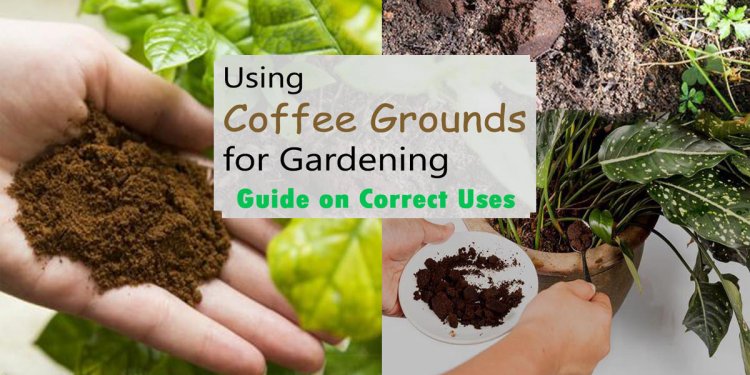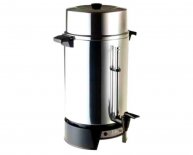
How to use coffee grounds in garden?
Concern. I don't put much 'green' product in my 12'x7'x4' compost heap; simply countless coffee grounds. (We drink plenty of coffee!) Is there a recommended limit? I do not desire my plants to OD on nitrogen (or caffeine!).
- -Ken; just away from Philadelphia, PA.
- -Richard at Rutgers University, New Jersey
Now, on to coffee grounds! As soon as we began carrying this out program, we warned individuals to only spread coffee grounds around acid-loving flowers, like azaleas, rhododendrons and blueberries, because reasons were bound become acidic; rather than to overdo it on those alongside flowering flowers, once the reasons had been certainly high in Nitrogen, helping to make flowers grow big, but could prevent the variety of blossoms and fresh fruits.
However we were sent some test results that showed reasons becoming neutral on pH scale! To discover just what offers, we labeled as will most likely Brinton, founder and Director associated with Wood's End analysis Laboratory in Maine, the definitive testers of grounds, composts, and raw components utilized in large-scale composting. Will solved the mystery immediately. Woods End, it turned out, had been the foundation of the neutral test! Ah, however follow-up research later on revealed so it hadn't already been coffee grounds alone, whilst the individual submitting the materials for assessment had reported, but grounds mixed with raw lawn waste, the classic 'dry brown' material that is the heart of a beneficial compost stack.
As it happens, as expected, that "coffee reasons alone are very acidic, " says Will, who spared all reasons from his Lab's break room for a week recently in order to test for people ("Eight o' Clock" coffee, that I remember fondly from our old the & P community supermarket). They arrived on the scene at 5.1, a great low-end pH for flowers like blueberries that thrive in extremely acid earth. "but that is more mild outcome we've previously found, " will begin to included, explaining that the various other 31 types of natural coffee grounds they've tested over time every had a pH below 5, too acidic for even a few of the alleged acid loving plants.
"And in some ways, the lands are even more acidic than those numbers imply", adds will likely, who describes that the coffee grounds they will have tested have also had a rather large residual acidity; excessive he suggests adding a cup farming lime to each and every ten pounds of reasons Before you decide to add them towards compost heap. (top-notch hardwood ashes might be utilized instead of the lime, and would include more nutrients into combine than the lime would.)
But I'd to quickly sputter that we never ever recommend incorporating any such thing to raw ingredients before composting for concern about upsetting the apple—eh, compost—cart. "Neither do I, " said Will; "this is a distinctive situation."
And he definitely does not think grounds must certanly be used in their natural type. Initially, he describes, they've been so acidic so Nitrogen wealthy which you risk generating a 'mold bloom' in which you distribute all of them. And second? "there isn't any life in those grounds; its all been boiled or perked away." Alternatively, he recommends doing just what the guy thereupon original test did—adding the grounds to microbe-rich lawn waste and composting that perfect combination. Will liked my advice of four parts shredded leaves to 1 part grounds by body weight, but adds that even having grounds make-up 10percent of a pile of otherwise shredded leaves would produce great compost.
Nutrient content? Will describes the sorts of coffee grounds an average home owner would create or get remain 1.5per cent Nitrogen. There is also most Magnesium and Potassium, each of which flowers really like; but perhaps not a lot of phosphorus (the "fruiting and flowering nutrient") or calcium, a mineral that numerous flowers crave, and whose lack assists clarify that recalcitrant acidity. ("Lime" is essentially calcium carbonate, and wood ashes will also be high in calcium; follow this link for a previous Question regarding the few days that goes into great lumber ash information.)
Therefore mix those coffee grounds in with a few lime or timber ash after which into lots of shredded leaves; you will make a superb, top-quality compost. The only exception I'm able to think about is our audience out western cursed with highly alkaline soil; you could test tilling in a few grounds alone to see if it moves your nasty soil towards natural without any side effects.
Otherwise, we cannot suggest their particular natural usage; the acidity might be sufficient to harm even acid-loving flowers. And indeed, which means our bad nj-new jersey listener could possibly be harming their flowers with all that uncomposted coffee. Unfortuitously for him, Northeast grounds are usually acidic; that is why numerous home owners in the North lime their yards. As soon as I scrolled through those 'testimonials' that therefore swayed him, we realized that they all appeared to be from California, where the soils are extremely alkaline. And you also can't improve clay soil through it much more acid or alkaline; the only method to REALLY improve clay earth would be to dig it and toss it into the forests!.
"
















